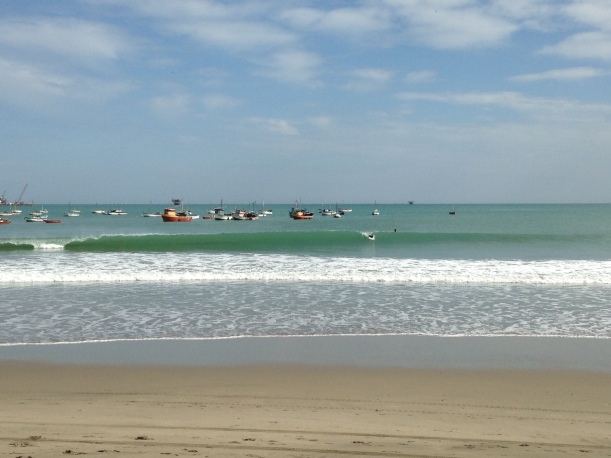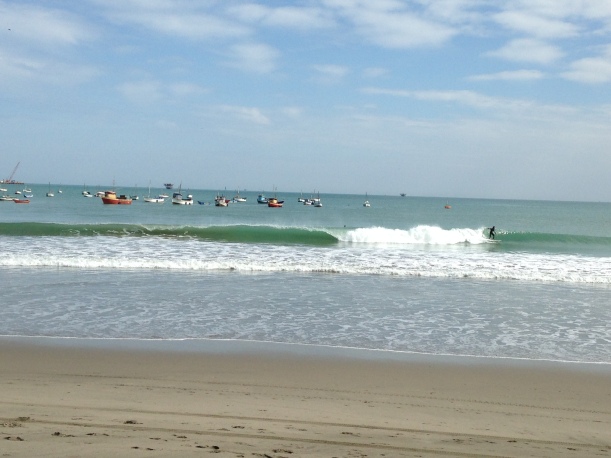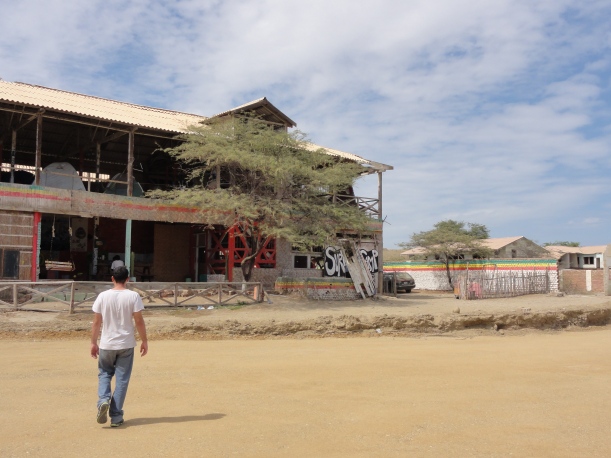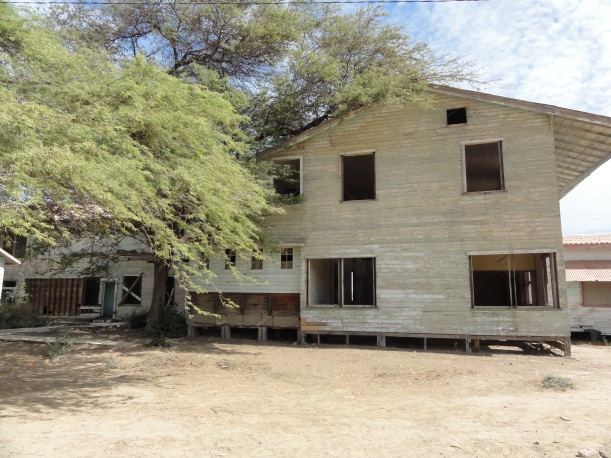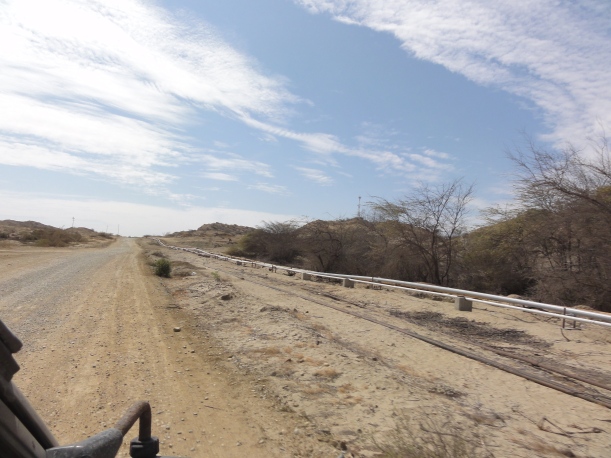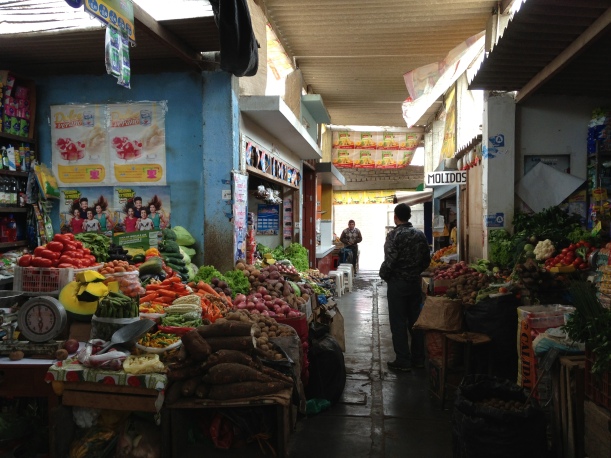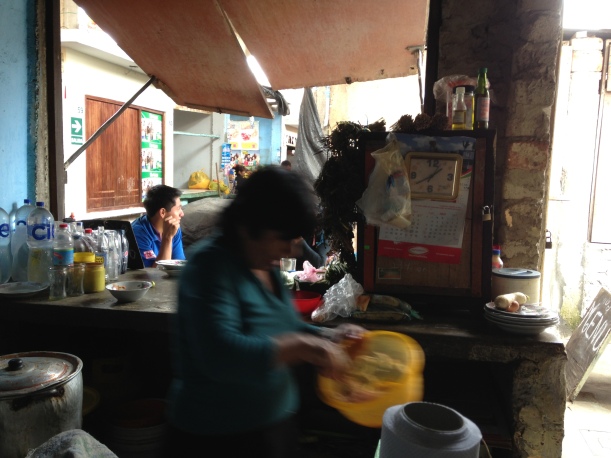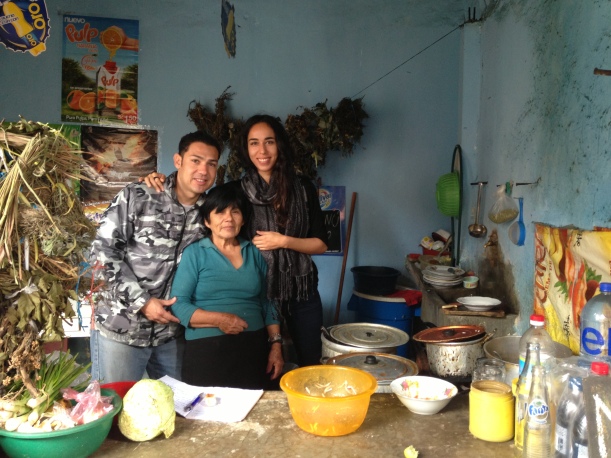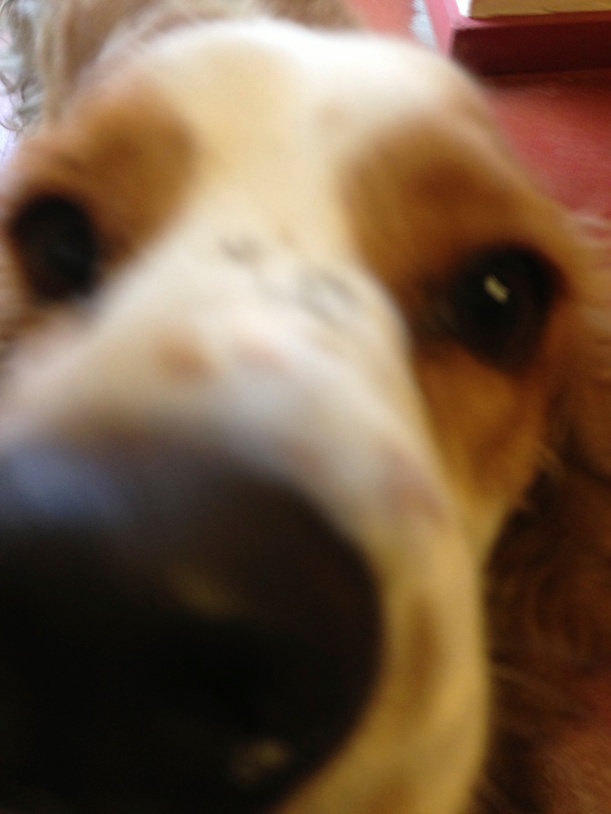After having a look at Mancora’s weather forecast, I was more than ready to be heading north and finding a little spot on the beach- 26 degrees Celsius in winter is my idea of a good time. I’m not an avid Lonely Planet reader (although I have no problem in having a little flick through from time to time) but I think that Mancora gets a mention because it was bustling with European tourists, as well as many South Americans and is full of hostels and accommodation to meet all budgets.
Just as you’re arriving in the sunny town, you cross a bridge with a bumpy track running underneath from the beach towards a labyrinth of narrow paths which offer a great choice of low key relaxed hostels in a very quiet area about ten minutes walk from the beach, perfect. We were on our way to Casa Máncora (which you can find on Facebook or couchsurfing) where Rulo stayed a few years ago when he was playing a few dates in the north of Peru. He had been I’m contact with Luis, the owner, and we’d been told we could arrive any time and park our van inside the hostel’s gates.
As we drove to Casa Máncora, I was already pleased to see that it was in a peaceful little area- I absolutely love the beach but I’m not a fan of being kept up into the early hours with music blaring from bars. What a little old lady I am turning out to be. So anyway, we arrived at the hostel and asked some of the guests where Luis was, oh ok, he’s in Lima. So who’s in charge? Oh right, no one!? Luis had gone popped down to Lima for a few days and left his hostel with guests, saying that he’d be back in a few days. I hadn’t met him but I liked him already.
As we were trying to contact Luis, one of the guests came over to offer us some soup that she had just made. After having a light breakfast in Lobitos we were seriously hungry so we accepted the offer straightaway. I always like free food and I’m always extremely grateful when I am offered, but being offered free hot food from someone you have just met when you are travelling and in need of a meal was incredible. It’s so simple but so obvious! The amount of times that I have stayed in a hostel and seen people throwing away leftovers is ridiculous. It was such a good foot to get off on and the mood stayed the same over the following the days: when we cooked, we offered anything that was left, and when we made juices in the morning we asked if our hostel friends wanted to try them. (They hadn’t tried avocado, sugar and milk before and seemed to like it, honestly, give it a go before you knock it!). I also have to say, these guys were incredible cooks and would make our food look extremely basic, one evening they gave us so much, we didn’t have to make food ourselves. Can you tell I’m a food lover?!
So anyway, back to our arrival. Tracey, a local girl was popping over in the mornings and afternoons to make sure everyone was ok and came over when Luis called her to warn us of our arrival, we had called him via Skype but he couldn’t hear us that well so she arrived to show us our room and make sure we had everything we needed. We had been fed by our hostel-mates, it was sunny and warm and we were ten minutes from the beach, so yeah, we were all good. The room was simple and exactly what I had been picturing: a double bed, two windows with mosquito net covers and a bathroom. We put our bags down and ran to the beach.

The mozzies had no chance of getting in due to the mosquito netted windows. Suckers…but actually, not really.
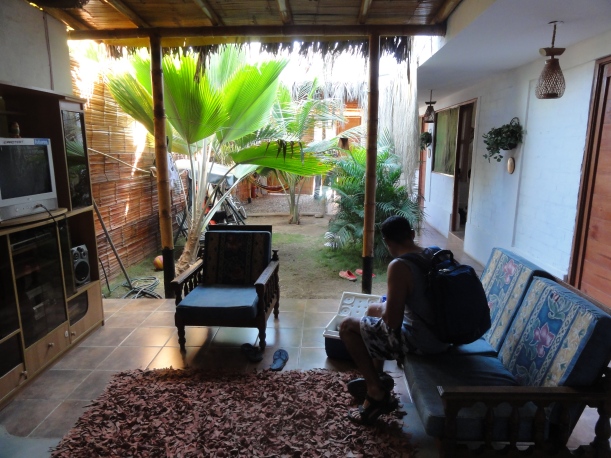
The living area in the hostel, comfy comfy

Past those thatched roofs= the beach. Yeah
An unfortunate over heard conversation
Rulo had to head over to Organos, the town before Mancora to find the nearest Western Union. I decided to stay and soak up some rays on the main beach, there were locals, other South Americans and lots of Europeans and Aussies, but it wasn’t overcrowded and most people were sunbathing and watching the surfers, both learners and the more experienced crew. The sun was delicious, it wasn’t too hot and there was a lovely breeze to cool me off once and again. I had decided to head down to the beach without my music but with my book so I could relax and listen to the sound of the sea. However, my sunbathing neighbours did not let that happen.
There were three young English travellers, one girl and two boys, and I am not over exaggerating when I say that one of the boys was so obnoxious and rude that I found myself staring open mouthed at him. Not only was he shouting at every vendor walking past to come over and then on hearing the price of what they were selling, telling them to f*** off (all in English), he couldn’t stop shouting about how much cocaine he’d taken, how much drugs he had bought or when he was going to do another line. What a loser. I always say that travelling is always good for you, but in this case my compatriot had his priorities all mixed up. Being obnoxious and rude to the locals is one thing (lucky for him they didn’t understand his insults) but blagging about much drugs he had bought was just idiotic. He should have just stayed in his bedroom in the UK. I picked up my things and found a much more peaceful spot about fifteen metres away- same view, but I could hear the sea a lot better.
When we weren’t being offered food from our hostel-mates, we were as usual on the hunt for places to eat alongside the locals. If you’re after home style food, there are plenty of places to eat. If you’re after local cuisine at great prices, you are also in luck. Here’s where we ate;

Jasusi, yummy yummy.

A delicious fresh fish ceviche for 10 soles/ 2.33 GBP. It was as good as it looks.

Seafood rice, also 10 soles, also as good as it looks.
Jasusi: recommended to us by a friend of Rulo’s who lived in Mancora for a few years and what a fabulous recommendation, it’s about ten blocks from the centre. We walked there and got a motor taxi on the way back for 1.50 soles/ 0.35 GBP because we were well and truly satisfied. Note: there wasn’t a ‘menu’ lunch deal and Jasusi’s brother-sister team have a rest on Thursdays when it is closed. If you’re ever in Mancora, check it out, the food was yummy yum and we went back the day after for more. Piglets.

Owing to my inability to give good directions, here is a photo of how to get to Jasusi.
The other places that we ate/bought food from were:
One of the seafront restaurants on our first day. I wouldn’t recommend the places over looking the beach, I think their main selling point is the view rather than the quality of the food. The menu was 3 soles/ for a small salad starter and fish chicharron (pieces of fish fried in batter) but I suspected it to be bought from the frozen section in a food shop.
The market where we bought veggies to cook in the hostel (be careful, a few of the vendors tried to short change me. They were unsuccessful) because we were too late to eat lunch their. I heard that a somewhat little but nevertheless delicious portion of fresh fish ceviche is 3 soles/0.70 GBP. You could just get two for that price. Seriously, what a bargain! I tried to find the address of the market to post a link but had no luck, if you ask anyone for the ‘mercado’ or ‘comedores’ they will point you in the right direction.
A little restaurant next to the Osaka shop on the way to the market (where you can change dollars to soles at a really good rate) which served us a chicken soup (the chicken was given to a little dog waiting outside as a present) and fried fish, beans, rice, salad and a drink for 3 soles/0.70 GBP each.
Beach time. My favourite time (as well as eating time)
After witnessing/listening to a psychotic child in a young mans body the day before, we decided not to go back to the main beach in Mancora. Instead, when we passed under the bridge to get to the beach, we turned left. What a good decision that was.
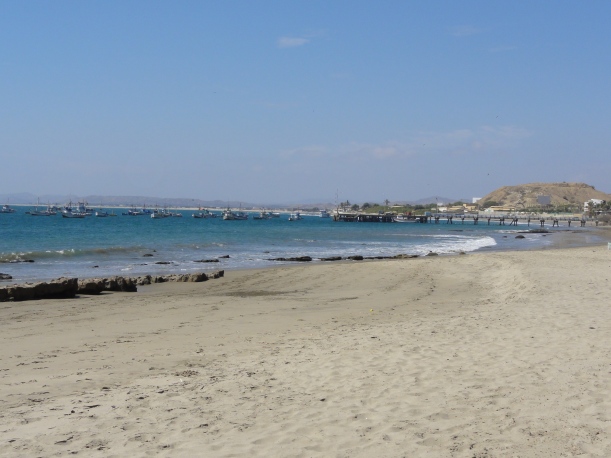
What a delight, a beach to ourselves with the sun up high and music to keep us company.

About fifteen minutes walk from the main beach, with a few hotels along the way.
We placed ourselves outside a hotel whose bar was playing swing music, lay down and relaxed. Luis had told us about a few rock pools to check out but the tide was too high, so we spent a few hours soaking up some rays and then headed back to Jasusi for day two of a yummy lunch.


Two little cats enjoying a present from the fishermen.

Little balls of sand made by crabs building their little crab houses.
Unfortunately, our time was cut short in Mancora because of building work a few metres from our hostel. Early on Friday morning, we heard bull dozers arriving (I don’t know why, I thought I could sleep through the noise) and being the clever person he is, Rulo jumped out of bed and went outside to see if we would be able to get our van out with all the building work. Unfortunately, part of the digging was taking place right outside the hostel door so we had to bundle everything up and hit the road. After some incredible days, we waved chao to our hostel, Luis and our hostel-mates and hit the road.
Casa Mancora can be found on Facebook and Couchsurfing. The hostel offers private double rooms with bathroom for 10-15 soles/ per person or bunkbed dorms for 10 soles pp with bathroom. Internet, a full kitchen (including a blender to make juices for breakfast) and a television are available. There aren’t many mosquitoes in Mancora because the entire city has been fumigated. It is a safe and relaxed haven for anyone looking for sun, beach and surf.

Even our 4×4 wouldn’t be able to compete with all of the digging.

Tobi waving us off with his tail. If he had a CV, it would say ‘flip flop thief extraordinaire’.
Mancora had been a dream, and we were soon on the road to Ecuador.





















